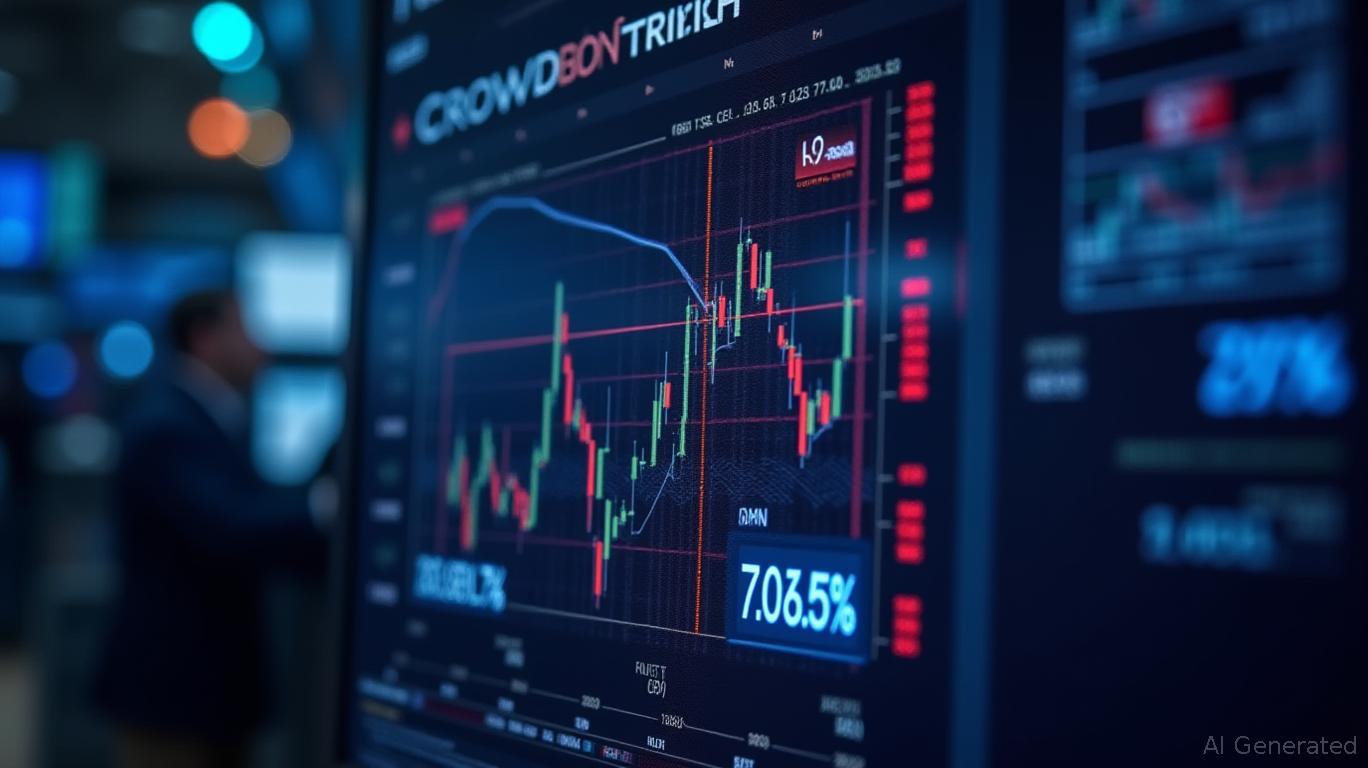RBC's SGS Estimates Under Siege: Navigating Macro and Geopolitical Crosscurrents
The global economy is entering a pivotal phase of heightened uncertainty, with RBC’s economic forecasts facing mounting headwinds from both macroeconomic softness and geopolitical turbulence. As fiscal policy divergences, trade tensions, and election cycles reshape risk premia, investors must recalibrate strategies to align with RBC’s revised outlook. This article dissects the key risks undermining the bank’s estimates and explores actionable insights for navigating the volatility.

Macro Risks: Growth Slows, Inflation Lingering
RBC’s revised U.S. GDP growth forecast for 2024—now 1.6%, down from 2%—signals a slowdown that could push equity markets lower. Historically, when U.S. GDP falls into the “sluggish” range of 1.1%–2%, the S&P 500 tends to decline. RBC’s U.S. equity team has already lowered the 2025 S&P 500 earnings per share (EPS) estimate to $264, down from $271, reflecting weaker GDP linkages and corporate downgrades.
Meanwhile, inflation remains a stubborn obstacle. While Canadian inflation dipped to 2.7% YoY in April . . . (truncated for brevity) and U.S. core inflation eased to 3.6%, both remain above central bank targets. rbc warns that fiscal stimulus—particularly in the U.S.—could keep services inflation elevated, complicating Fed policy.
Geopolitical Crosscurrents: Elections and Policy Shifts
The 2024 election cycle is amplifying fiscal risks, with governments prioritizing voter support over austerity. In the U.K., the Conservative Party’s autumn election gamble faces a fiscal quagmire: rising debt, stagnant growth, and the Bank of England’s constrained monetary policy. RBC advises shorting UK gilts due to supply risks and a potential Labour government’s expansionary agenda.
In the U.S., the presidential race threatens to deepen fiscal imbalances. Even a tight election is unlikely to curb Biden’s spending, which has fueled economic outperformance but risks sustaining inflation. A Trump victory could exacerbate trade tensions—expanding tariffs, cutting Ukraine aid—and boost the dollar. RBC’s analysis highlights the U.S. Treasury supply as a key vulnerability, with record issuance pushing term premia higher.
Europe, too, is not immune. While RBC calls the region a “beacon of stability” amid centrist governance, external risks like China’s shift toward security over growth and the Ukraine conflict linger.
Investment Implications: Navigating the Fog of Risk
RBC’s analysis underscores three actionable themes for investors:
- Currency Dynamics:
- Strong Dollar: U.S. fiscal pressures and geopolitical dominance could lift the dollar against vulnerable peers like the Mexican peso (post-Trump immigration policies) and Ukrainian hryvnia.
Emerging Markets: Poland and Romania offer asymmetric upside if local elections stabilize policy environments. A Tusk-led coalition in Poland could revive rule-of-law reforms, strengthening the zloty.
Bond Markets:
- Short-dated U.S. Treasuries (e.g., 2-year notes) face pressure from fiscal supply, while steepening yield curves reflect sticky inflation. Avoid front-running Fed easing.
European credit spreads may stabilize, but U.K. gilts remain risky due to fiscal overreach.
Commodities and Geopolitics:
- Geopolitical flashpoints like the Middle East or U.S.-China trade disputes could drive oil and metals prices. RBC’s commodities team advocates monitoring energy infrastructure risks and AI-driven tech decoupling.
Conclusion: Prudence Amid Uncertainty
RBC’s revised estimates underscore a world where growth is fragile, inflation is persistent, and geopolitics are destabilizing. Investors must adopt a defensive posture while seeking pockets of resilience:
- Equities: Focus on sectors insulated from earnings downgrades, such as utilities or defensive healthcare.
- Currencies: Leverage dollar strength and stable EM currencies like the zloty.
- Bonds: Prioritize short durations and avoid gilts.
The data is clear: with U.S. GDP at 1.6%, S&P 500 EPS at $264, and geopolitical risks at decade highs, complacency is misplaced. RBC’s framework offers a roadmap, but success will hinge on agility in this high-stakes landscape.
Final Note: Always consult with a financial advisor before making investment decisions.










